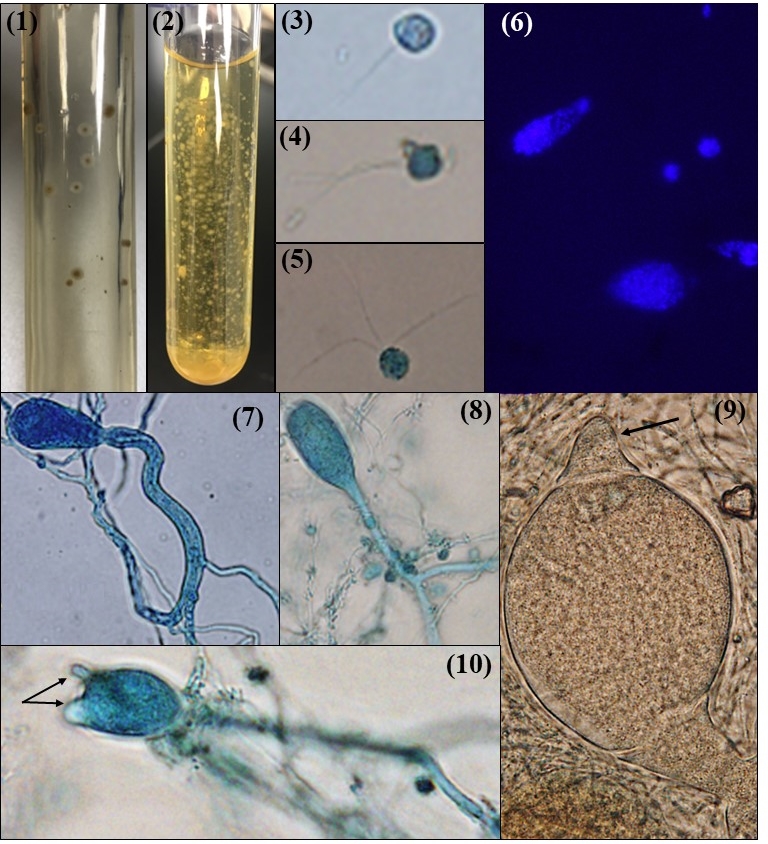Aklioshbomyces was isolated from the feces of a wild white-tailed deer in 2020 (Hanafy et al, 2020a). Like several anaerobic fungal genera, Aklioshbomyces has a monocentric thallus, filamentous rhizoidal system, and monoflagellated zoospores.
The genus name, Aklioshbomyces, is derived from the Arabic word for grass eaters or herbivory: Aklioshbo. The type species is called A. papillarum, referring to the distinct papillated sporangia produced by this fungus. The type strain for the genus is WT-2. To date, no other Aklioshbomyces species have been described.
According to a previous LSU-based diversity survey of anaerobic fungi in herbivores (Hanafy et al 2020b), Aklioshbomyces appears to be rarely distributed in nature, however, it presented in a relative high abundance in the deer fecal sample from which it was isolated (Hanafy et al, 2020a).

Morphology
Images are shown above of Aklioshbomyces papillarum strain WT-2. In liquid medium, Aklioshbomyces produces a thick fungal biofilm that firmly attaches to the tube’s glass surface (Image 1). On solid roll agar medium, it forms small beige, circular colonies with a brown central core of sporangial structures (Image 2).
Microscopically, Aklioshbomyces produces mainly monoflagellated zoospores (Image 3), although zoospores with two (Image 4) and three (Image 5) flagella can also occassionally be observed. Aklioshbomyces has monocentric thalli with filamentous anucleate rhizoidal systems (Image 6).
Both endogenous (Image 7) and exogenous (Image 8) sporangia are produced by Aklioshbomyces. Most sporangia have one or two papillae (Image 9-10 arrows).
Sequence Information
No sequenced genome is currently available for Aklioshbomyces. For the latest update regarding publically available genomes for this genus, please see here.
For the Aklioshbomyces longus strain WT-2 that is pictured above, the LSU sequence is available in the NCBI database (accession number MK882001).
